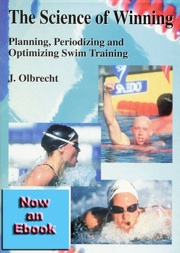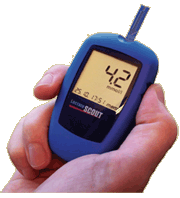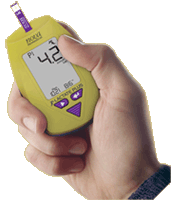Part I TRAINING
Chapter 1 DEFINITIONS AND PRINCIPLES OF TRAINING
Training for athletics is scientifically defined as “the systematic and purposeful activation of the muscles with the objective to improve performance through morphological (structural) and functional adaptations” (Hollmann 1990).
Thus, it is considered training if there is an activation of the muscles. Although nutrition and eating habits may affect the success of training, the muscle development, and, consequently, the performance in competition, they are not considered training. Mental training, however, induces muscle activity. It fits therefore with the definition above and will be seen as a form of training.
Performance in competition depends on several determinant components that fall into 3 main classes (tab. 1):
- Technique
- Physical conditioning
- Psychology and mental strength
A coach who wishes to train an athlete for a high competitive performance must ensure that all these components are emphasized within the training plan.
In this book we will focus on the physical conditioning of swimmers, without losing sight of the fact that “technique” and “psychological capabilities” also strongly affect performance in competition. Indeed, despite possessing a high level of physical conditioning, a swimmer that is not able to control or cope with the competitive pressure will never perform at his best, nor will he exhaust his conditioning potential.
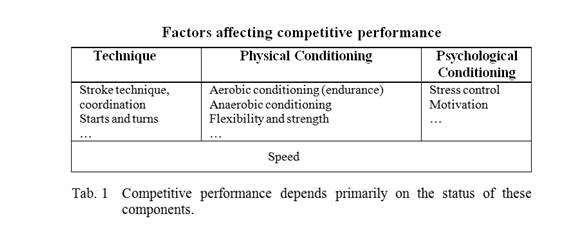
SUPER-COMPENSATION
Description
A healthy human body adjusts itself to stimuli provided by the environment. For example, if one travels to La Paz, Bolivia, which is located at an elevation of 12,000 feet above sea level, he certainly will, at first, have trouble breathing and experience difficulty even with light activity. After a few days however, his body will adjust to this extreme altitude and, after an adaptation period, he will even be able to resume nearly normal activity. Similarly if one travels to a “warmer” country, he will inevitably experience some discomfort for the first few days. After a few days, however, the heat will become tolerable and the level of discomfort will lessen because a healthy human body always adjusts itself to ongoing stress. Likewise, a body that is regularly exposed to a certain level of exercise will, after an adaptation period, be able to handle greater workloads and, consequently, be capable of performing better in competition.
The adaptation phenomenon is ruled by the “principle of super-compensation” which follows 4 distinctive phases (fig. 1):
- Phase 1: during this phase the swimmer completes a large volume of training; he becomes tired and his physical performance drops (curve decline)
- Phase 2: the so-called recovery phase induced by very low intensity training (regeneration
training or active rest) and rest between training sessions. The physical performance will now
return to the starting level (curve rise equals compensation for the hard work). This phase allows
for several biological adaptations to take place:
- normalization of the cell environment: waste products are removed, the pH-values normalize and the cell structures recover
- recovery of neuromuscular stimulation processes: a tired muscle does not react optimally to stimuli from the nerves. This will be restored when the muscle recovers
- concentration and activity of enzymes and hormones will be restored
- energy sources are replenished. Glycogen and other fuel sources are restored
- Phase 3: the super-compensation phase: physical performance increases above the initial level. The swimmer can now handle the same load as before but with less strain or a more intense load with the same ease
- Phase 4: if training is not carried on, the improvement in physical capacity will be progressively lost
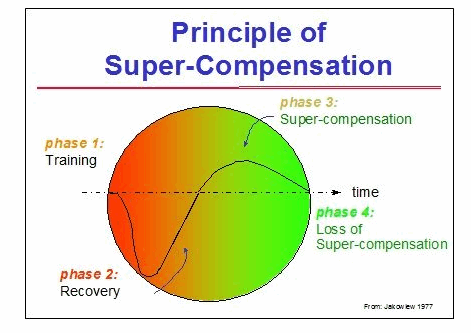
Fig. 1 Schematic representation of “the principle of super-compensation” (Jakowlew).
Requirements for a Successful Super-Compensation Process:
- A healthy body: inflammation, overtraining, mental stress, etc. strongly reduce the possibility for super-compensation
- Adequate training intensity and volume: This is probably the most delicate, even crucial aspect of successful training. Indeed, the training must be just long enough (volume) and just hard enough (intensity) to stimulate the body in such a way as to induce morphological (structural) and functional adaptations. When training is too hard and/or too long, it will break down the body too much and will actually impede the process of super-compensation. So, the real art is always adjusting intensity and volume to meet the purpose of the training as well as the conditioning and mental state of the athlete. We will come back to this later
- Enough rest (passive or active rest): rest or regenerative workouts will make up most of an athlete’s training time. Insufficient rest or insufficient low intensity training (regeneration training) between important training sessions prevents the body from achieving super-compensation
This brings us to one of the most important and overriding principles in training:

Timing
With a healthy athlete the time necessary for super-compensation (fig. 2) depends on several factors:
- the type and duration of the workout
- the conditioning level of the athlete
- the recovery level of the athlete
If the swimmer has a high conditioning level and/or is well rested, the time for super-compensation will be shorter. Mental stress and fatigue on the other hand, will slow down the process necessary to achieve super-compensation.
Furthermore, there should be a distinction between long and short sets in training. For example, an intensive anaerobic set of 600 m will require a longer time for super-compensation than a shorter set of the same type (e.g. set of 150 m).
- Long anaerobic set of 600 m - e.g. 3 x 200 m broken (4 x 50 m max. with 10 sec rest) and 10 minutes rest between each set
- Short anaerobic set of 150 m - e.g. 2 x 75 m max. (50 m + 25 m with 10 sec rest after the 50 m) and 10 minutes rest after the first set
The 150 m set will require only 2 days for super-compensation while the 600 m set will require a longer period (3 to 4 days).
These differences in timing for super-compensation are due to the duration of the various biological regeneration processes that take place during the recovery phase. While the replenishment of creatine phosphate will take only a few seconds to a couple of minutes to return to normal levels, the reloading of the muscle with glycogen may last up to 24 hours or, in some cases, even longer. The production of new enzymes or proteins may also take hours, sometimes even days to complete.
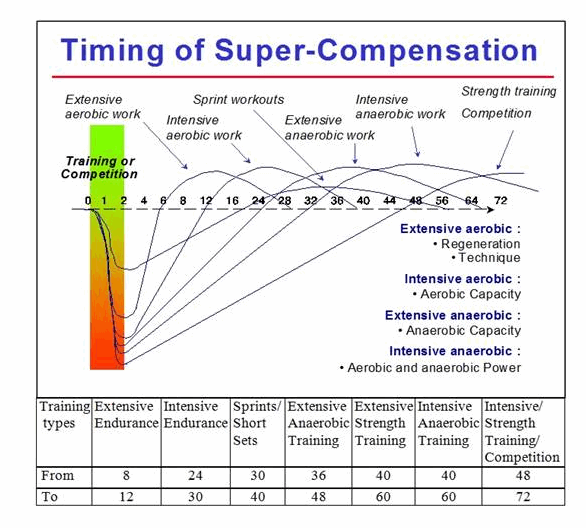
Fig. 2 Time, expressed in hours, for different types of training to reach
the maximal super-compensation (Olbrecht 1998 not published).
Long but extensive (low intensity) training sets cause little or no structural breakdown of the organism. In this case, only the expended energy supplies will have to be replenished, so the time necessary to recover from this type of effort will be quite short.
Intensive training units, on the other hand, swallow energy and are very destructive for the organism. They will, therefore, require a considerably longer regeneration period (recovery phase) because the energy supplies will have to be refilled and a number of proteins and enzymes will need to be reconstructed.

For animations on supercompensation click HERE.
BIOLOGICAL ADAPTATIONS
The adaptations of the human organism follow a regular pattern. During the first 1 to 2 weeks of a new training cycle the body adapts quickly to the new stimulus. In the next few weeks the power of this same stimulus to provoke an adaptation will progressively fade to end up completely after 6 weeks (fig. 3). We therefore call week 1 and 2 of the adaptation process the “fast adaptation phase” and weeks 3 to 6 the “stabilization phase”.
After the body stops responding to the current training load (intensity and/or volume), it is necessary to increase it to induce further adaptation. This means that, after about 6 weeks, training should be modified by either:
- increasing the training volume
- increasing the training intensity
- increasing the frequency per week of training units or intensive workouts
- changing the proportion of workouts in each stroke (e.g. changing from freestyle to breaststroke while keeping volume and intensity the same)
- making the training program more difficult by changing the training environment such as training at altitude or by reducing the regenerative training between intensive workouts (e.g. maintaining the same number of intensive workouts per week but with less extensive training units between them)
- a combination of the changes in points 1-5
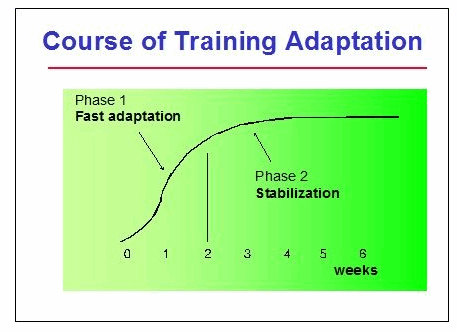
Fig. 3 Adaptation process in the organism as a result of a training stimulus.
Why wait 6 weeks before introducing a new stimulus or a new training load? Why not change the training plan after 2 weeks when the stimulus has induced its fast adaptation? The reason is that weeks 3 to 6 are necessary to stabilize the adaptations brought about in weeks 1 and 2.
Let’s take an example of an adaptation in endurance:
For the improvement of the endurance capacity to take place, thousands of small cellular parts need to be rebuilt and/or newly produced. Some of them will be rebuilt quickly while others will require more time. If the training load is increased too soon, only the cellular structures that can adapt quickly will be able to follow the imposed training rhythm. All the others will fall behind; they will not be rebuilt or, at worst, be irrevocably lost. As a consequence, there will be no homogeneous development of the endurance capacity and, in due course, this may result in the swimmer breaking down and becoming overtrained.
Moreover, it is important to reduce both volume and intensity near the end of the stabilization phase in order to start the next training cycle in a fresh and relaxed condition.
In addition to the fact that the basic physiological adaptation pattern requires six weeks, there are two other equally important principles of training adaptation that must be considered. The first is called the detraining process while the second is referred to as the declining return on training investment.
DETRAINING PROCESS
Whenever the athlete stops training, a “detraining” process sets in, inducing a relatively rapid loss of the acquired adaptation. For example, half the increase in mitochondria from 5 weeks of training may be lost in 1 week of detraining (fig. 4). Since the number of mitochondria substantially determines the endurance capacity of the swimmer, it is obvious that the loss of 1 week of training will have a marked effect on the endurance.
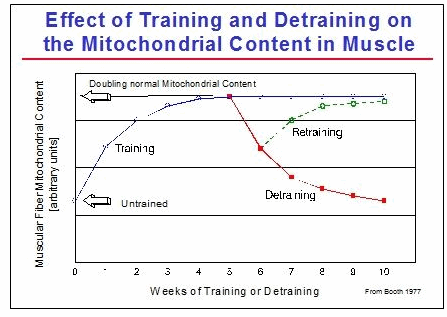
Fig. 4 The evolution of the number of mitochondria in the muscle cell as a function of the number of weeks of training, detraining and retraining.
It will require nearly 4 weeks of “retraining” for the swimmer to regain his condition after 1 week of detraining. Therefore, it is clear that only regularity and continuity in the training process will ensure progression of conditioning over several years.
Practical experience has taught us that the rate of detraining of the endurance capacity depends on the time that has been spent in building up this capacity. In other words, the more time the swimmer spends building up his endurance capacity, the longer this capacity will remain strong, even when he drastically reduces training. The following two examples illustrate this finding:
- A top level swimmer, who was preparing for the World Championships, had to interrupt the last 7 months of her preparation quite frequently because of school commitments and injuries. Despite these breaks in training the swimmer improved her endurance capacity from 58 to 64 ml/kg per min within the last 8 weeks prior to the competition. However, a test 2 weeks after the World Championships revealed that her aerobic capacity had dwindled to 59 ml/kg per min: a loss of 5 ml/kg after only 2 weeks of rest. In contrast, her training mates, who got through the entire preparation period without interruption, managed to keep almost the same level of aerobic capacity they had before the competition despite 2 weeks of taper followed by 2 weeks of nearly no training (the transition period)
- If a swimmer misses training because of an injury, providing it is not a serious injury or an infectious disease, the time he will need to regain his previous level of endurance capacity will be shorter if the build-up period has been long. Indeed, if a swimmer had a continuous build-up period of at least 4 months prior to his injury, then it would not be unusual for him to regain his previous aerobic capacity level after only 14 days of retraining. On the other hand, a swimmer who built up his aerobic capacity in only 5 weeks will undoubtedly lose more of his aerobic capacity after 2 weeks of forced inactivity and have to restart the build-up process again
These two examples tell us that:
- as long as the training period preceding a period of inactivity due to injury or illness - providing it is not serious - was continuous and long enough, there is no reason to panic. The swimmer will be able to regain his previous level of conditioning within a short time. Alternative training exercises such as strength training, gymnastics or even other sports like cycling (e.g. if shoulder is injured) will help to reduce the time needed to regain the previous level. However, recovering health and fitness remains, of course, the priority
- it is “vital” to grant the swimmer a week of rest after the last main competition before starting a new macrocycle
- it is physiologically possible to keep a swimmer in good form for several successive competitions for up to 4 weeks, provided the build-up period was long enough and the swimmer is highly motivated. The psychological and mental support will in this case prevail over conditioning
DECLINING RETURN ON TRAINING INVESTMENT
Studies based on scientific research have shown that the rate of improvement in conditioning is not linear to the increase of training load. As a matter of fact, the effect of an increase in training load (increase of intensity and/or volume) will be different depending upon the conditioning level of the swimmer. Indeed, the better the conditioning level, the greater the training load that will be needed to make even slight improvements. Consequently, the risks of injury and overtraining will be greater. Or, to put it differently, the better the swimmer, the less improvement a same increase in training load will produce. This phenomenon is called the principle of declining return on training investment (fig. 5).
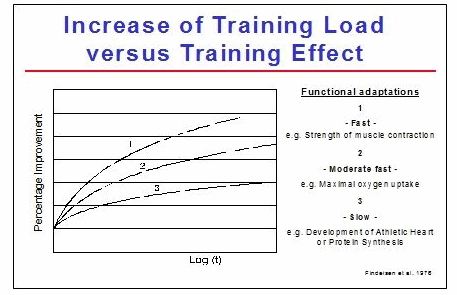
Fig. 5 Percentage of improvement related to the increase of training load.
The principle of declining return on training investment is applicable to all kinds of training adaptations:
- quick adaptation such as strength training
- fairly slow adaptation such as the improvement in VO2max
- slow adaptation such as the development of the cardiovascular system, joints and tendons, etc.
With this principle in mind it is clear that we should always look for the smallest increment of training load that will produce the greatest possible training effect. For example, as long as swimmers can improve their conditioning with one single training session a day, they need not train twice a day, except during training camps, of course.
Each change in the training load has to be introduced gradually and progressively over time. Increasing the training load of young, talented swimmers radically and extremely will result in successes in the short run, but stagnation will soon set in. When this happens, most athletes become discouraged and stop training.
The principle of declining return on training investment is a common rule in the training process, but its rate is very individual. Indeed, a given training load will not induce the same conditioning improvement for every swimmer. In other words, each swimmer adapts differently and at his own rhythm to a certain training load. So, patience is needed to reach the adaptation longed for. There is no point in trying to force it, particularly with less talented swimmers. High performance swimmers, on the other hand, nearly always have a high rate of improvement regardless of how strenuous the workload may be. The rate of improvement that results from a certain workload could therefore be a good standard to detect or identify new talent.
THE WAVE PRINCIPLE IN THE TRAINING PROCESS
To ensure a continuous improvement of conditioning, it is not only necessary to change the training load after approximately 6 weeks (see Biological Adaptations) but also to provide regular periods of regeneration training for the super-compensation to take place. The structure of an effective and successful training process will therefore be characterized by a continuous alternation of periods of increased training load (training units at a higher intensity and/or volume) and periods of reduced training (regeneration training).
This alternation of intensive or high volume training and regeneration sessions, often referred to as the wave principle of training, can easily be achieved by:
- working with mesocycles (see The Mesocycle) of 2 to 7 weeks divided into two parts. The first part
(the working phase) should encompass about 3/5 of the mesocycle and consist of high volume sets and
some intensive workouts. The rest of the mesocycle (the recovery phase) should be a regeneration
period consisting of only a few quality sets (workouts at high intensity) and a lot of regenerative
training
The following figure (fig. 6) presents a 5-week mesocycle. During the first part of the cycle (week 1 to 3, the working phase), the training load is progressively increased by raising volume, intensity and frequency of the intensive workouts. For example, from week 1 to week 2 the total volume increases and the number of quality sets is doubled. In the third week, the frequency of the quality sets remains the same as in week 2 but the intensity and total volume of these sets increase during the second part of the mesocycle (week 4 and 5, the recovery phase) the training load should be reduced by decreasing volume as well as intensity (such as only 1 or 2 intensive workouts, which will be shorter than during the working phase) - alternating intensive and high volume sessions with regeneration training within each week of the mesocycle. It is absolutely essential to intersperse the intensive sets with a lot of very extensive work in order to enhance the effect of the progressively increased workload
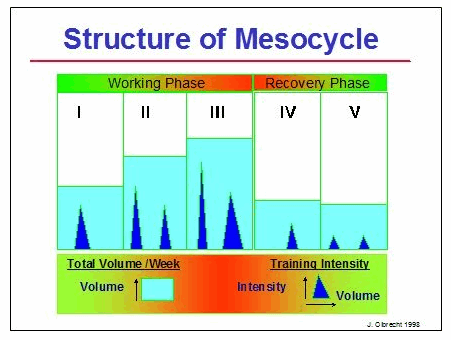
Fig. 6 The wave principle during a 5-week mesocycle (Olbrecht 1998 not published, used in oral presentations).
Variations on this mesocycle are always possible, sometimes even necessary, but the wave pattern must remain present, both in volume and in intensity. In chapter 6, Basics on Training Planning (see Mesocycle), we will focus on and discuss the pros and cons of the different types of mesocycles.
We can conclude that:

Note: It is often claimed that “variation is necessary in training” to cheer up and motivate the swimmers. It must be clearly stated that variations in training are meant to meet training objectives and not to reduce the boredom of the swimmers. The coach will already have plenty of opportunities to vary training to motivate his swimmers as the training objectives change during the different steps of the training process.
For more information on the book, click here. For the introductory information and a description on how to use the book click here.
Reprinted with permission of publisher and Jan Olbrecht
